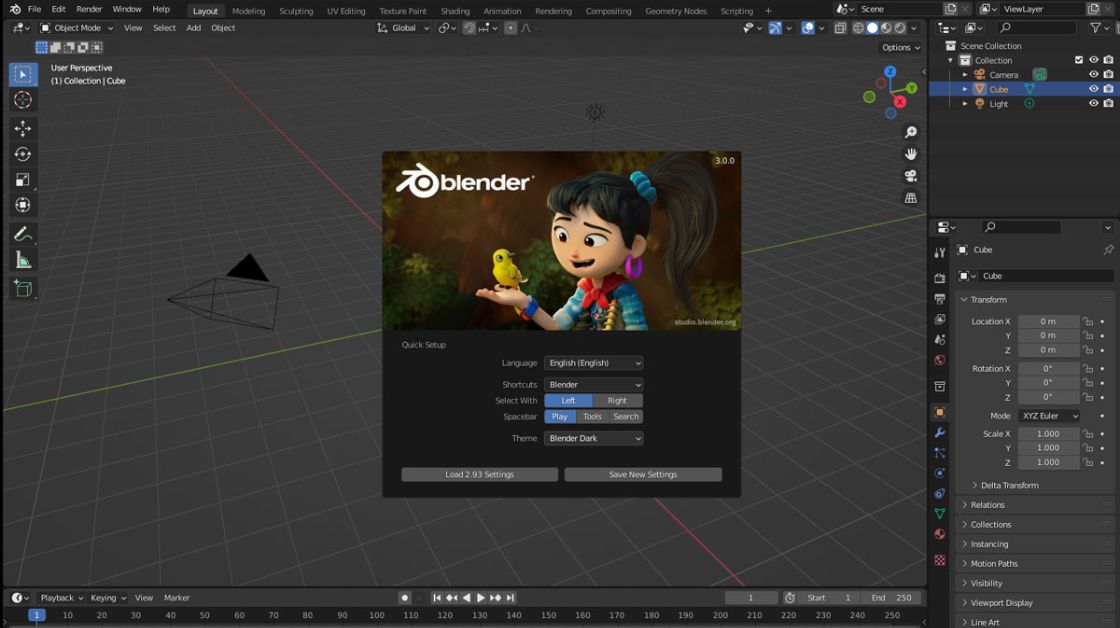
Exploring the World of 3D Animation Operating Systems: Fundamentals, Evolution, Features, and Future Trends
Exploring the World of 3D Animation Operating Systems: Fundamentals, Evolution, Features, and Future Trends
Introduction
1.1 Overview of 3D Animation Operating Systems
In the dynamic landscape of digital content creation, 3D animation has emerged as a transformative force, pushing the boundaries of visual storytelling and user engagement. At the core of this evolution lie specialized operating systems tailored to the unique demands of 3D animation processes. This section provides a comprehensive overview of these 3D Animation Operating Systems, delving into their architecture, functionalities, and role in shaping the creative landscape.
1.2 Importance of 3D Animation in Modern Applications
The integration of 3D animation has become increasingly pivotal in various spheres of modern applications. From entertainment and gaming to education and simulation, 3D animation serves as a powerful medium for conveying complex ideas and creating immersive experiences. This subsection explores the significance of 3D animation in contemporary applications, shedding light on its impact on user engagement, communication, and the overall user experience.
- Exploring Geographic Information System (GIS) Operating Systems: A Comprehensive Guide
- Optimizing Global Communication: A Comprehensive Guide to the Language Translation OS
Fundamentals of 3D Animation
2.1 Basics of 3D Modeling
Explore the foundational concepts of 3D modeling, distinguishing between polygonal modeling and NURBS modeling techniques. Gain insights into the methods used to create 3D objects and shapes within a digital environment.
2.1.1 Polygonal Modeling
Examine the process of creating 3D models using polygonal meshes, understanding the advantages and limitations of this widely used modeling technique.
2.1.2 NURBS Modeling
Delve into the world of Non-Uniform Rational B-Spline (NURBS) modeling, a mathematical representation for generating curves and surfaces, and its applications in 3D modeling.
2.2 Animation Principles
Uncover the core principles governing 3D animation, focusing on keyframes, tweening, rigging, and skinning techniques. Learn how these principles contribute to the creation of lifelike and dynamic animations.
2.2.1 Keyframes and Tweening
Explore the role of keyframes and tweening in animating objects, characters, and scenes in a 3D environment.
2.2.2 Rigging and Skinning
Understand the intricacies of rigging and skinning, essential processes for providing movement and realistic deformation to characters in 3D animation.
Evolution of 3D Animation Operating Systems
3.1 Historical Development
Trace the historical development of 3D Animation Operating Systems, understanding their origins and pivotal moments that shaped their evolution.
3.2 Milestones in 3D Animation OS
Identify key milestones in the development of 3D Animation Operating Systems, showcasing advancements and breakthroughs that have influenced the industry.
Key Features of 3D Animation OS
4.1 Real-time Rendering
Examine the real-time rendering capabilities of 3D Animation Operating Systems and their impact on the visualization of animated content.
4.2 Simulations and Dynamics
Explore how 3D Animation OS handle simulations and dynamics, enabling realistic physics-based interactions within animated scenes.
4.3 Integration with Animation Tools
Investigate the seamless integration of 3D Animation OS with various animation tools, enhancing the overall workflow and creative possibilities.
Popular 3D Animation Operating Systems
5.1 Autodesk Maya
Explore Autodesk Maya, focusing on its interface, workflow, and notable features that make it a popular choice among 3D animators.
5.1.1 Interface and Workflow
Analyze the user interface and workflow of Autodesk Maya, understanding how these elements contribute to the animation process.
5.1.2 Notable Features
Highlight key features that set Autodesk Maya apart, showcasing its capabilities in 3D animation.
5.2 Blender
Examine Blender, emphasizing its open-source advantages and the strong community support that has contributed to its widespread adoption.
Open-Source Advantages
Discuss the advantages of Blender being an open-source 3D Animation OS, exploring the benefits and implications for users.
5.2.2 Community and Support
Highlight the role of the Blender community and the support available for users, contributing to its success as a 3D Animation OS.
Challenges and Future Trends
6.1 Technical Challenges in 3D Animation OS
Identify and discuss the technical challenges faced by 3D Animation Operating Systems and the strategies employed to overcome them.
6.2 Emerging Technologies and Innovations
Explore the latest technologies and innovations influencing the future of 3D Animation OS, anticipating how they might shape the industry.
Case Studies
7.1 Successful Implementations of 3D Animation OS
Examine real-world case studies showcasing successful implementations of 3D Animation Operating Systems across diverse applications.
7.2 Impact on Industries
Analyze the broader impact of 3D Animation OS on various industries, assessing how these systems have revolutionized content creation and user experiences.
Best Practices in 3D Animation OS Development
8.1 Collaboration and Workflow Optimization
Discuss best practices for collaboration and workflow optimization in the development of 3D Animation Operating Systems, emphasizing efficiency and creativity.
8.2 Performance Optimization Techniques
Explore techniques for optimizing the performance of 3D Animation OS, ensuring smooth and resource-efficient operation.
Conclusion
9.1 Recap of Key Points
Summarize the key points discussed throughout the document, reinforcing the fundamental aspects of 3D Animation Operating Systems.
9.2 Future Prospects of 3D Animation OS
Offer insights into the potential future developments and trends in 3D Animation Operating Systems, considering emerging technologies and evolving industry demands.
References
10.1 Citations and Sources
Provide a comprehensive list of citations and sources used in the document, ensuring credibility and facilitating further exploration.
10.2 Additional Reading
Offer additional resources for readers interested in delving deeper into the subject of 3D Animation Operating Systems.